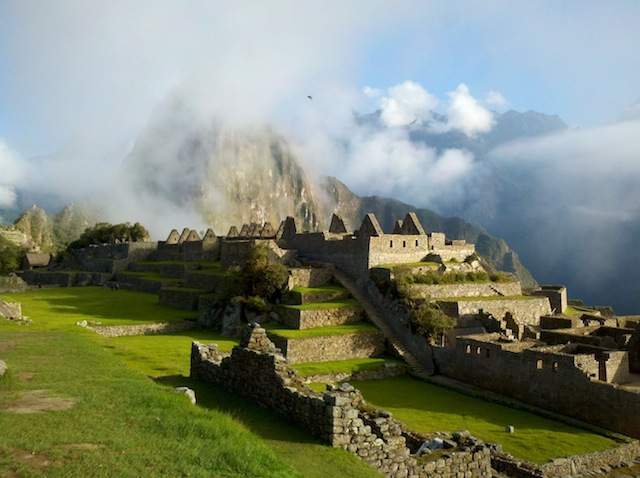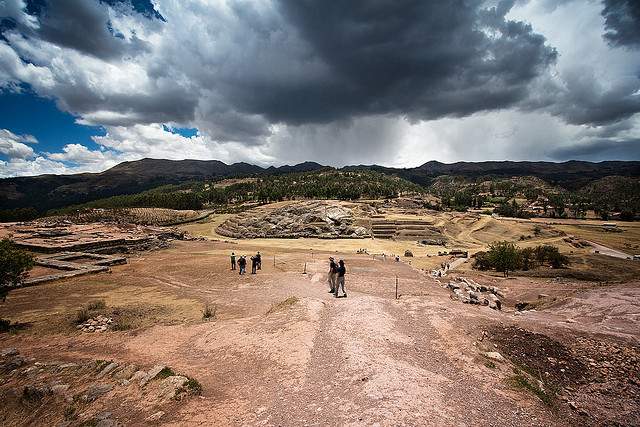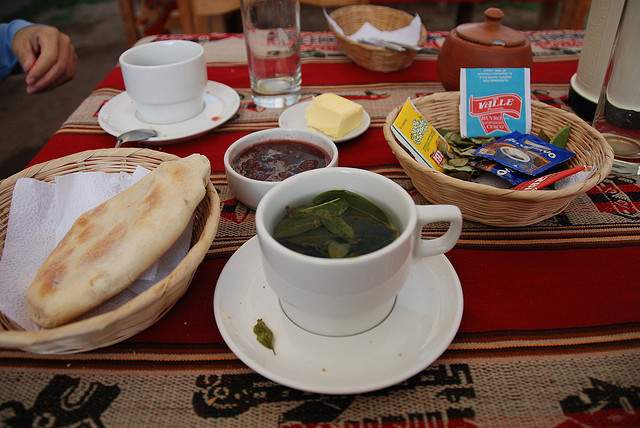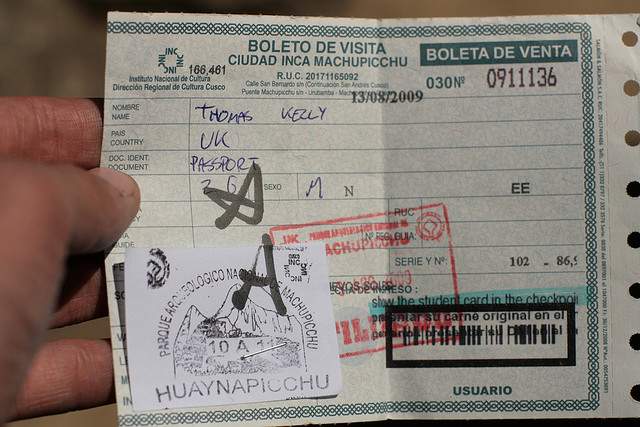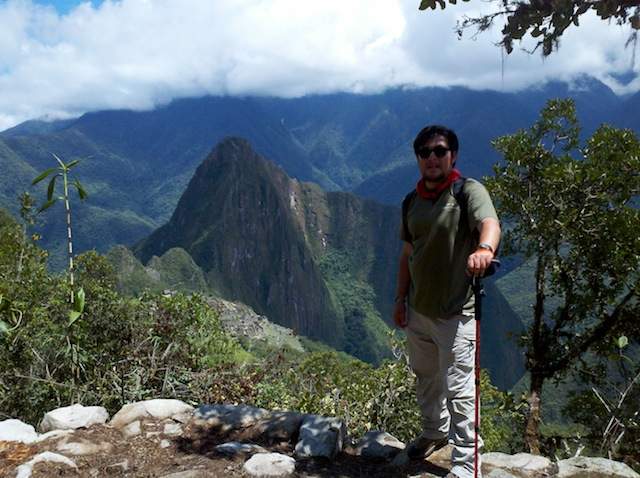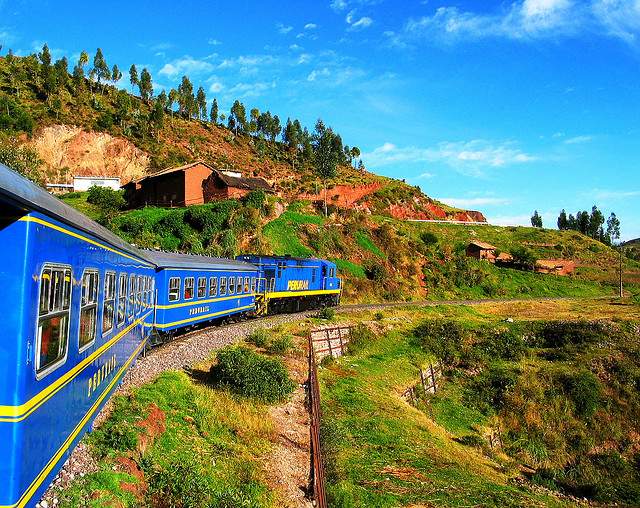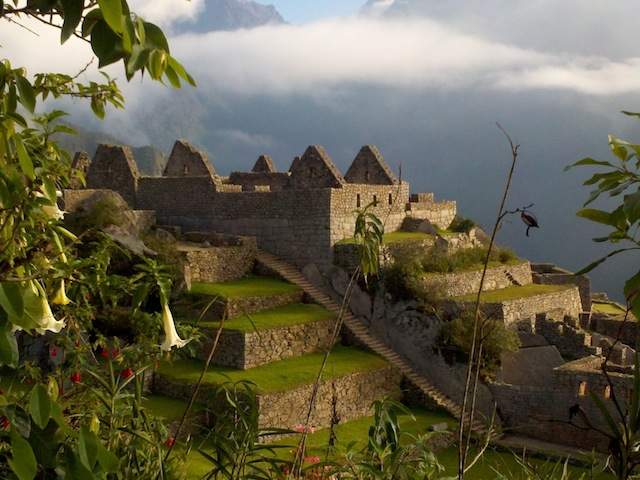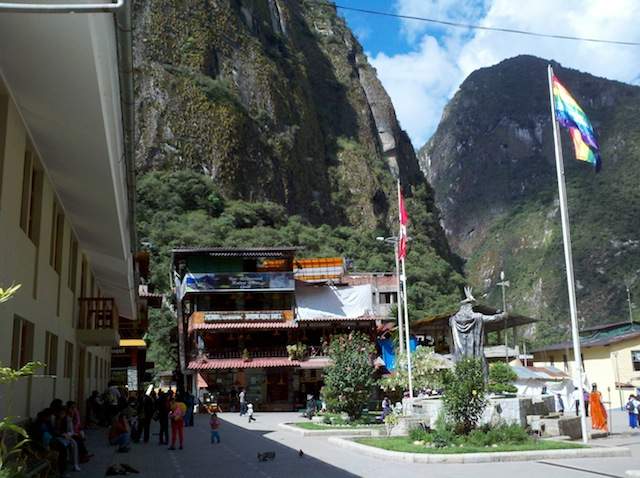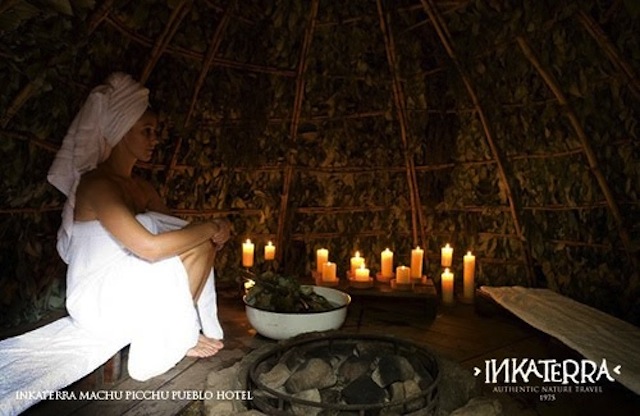History is steeped in irony and Peru’s “lost” city of Machu Picchu is no exception. This fifteenth century Incan citadel in the clouds was never actually lost but remained an open secret among Andean locals throughout the centuries. Unlike other Inca sites such as Sacsayhuaman or Pisac, Machu Picchu escaped discovery and sacking by the invading Spanish Conquistadors. Instead the city appears to have been voluntarily vacated around 1572. Until the American historian and explorer Hiram Bingham stumbled upon the overgrown site in 1911, no foreign traveler had set foot on Machu Picchu’s stonework steps.
With the completion of the railway in 1928, that would forever change.
A UNESCO World Heritage Site, Machu Picchu received at least one million visitors in 2011, the centennial year of Bingham’s “discovery,” according to Percy Canales, president of Peru’s National Chamber of Tourism. Seventy-percent of those tourists were foreign travelers, and the other 30 percent Peruvians, notably children with school groups.
Navigating Machu Picchu involves steps, a lot of steps—innovative as the Incas were, they didn’t design lifts or elevators. So what more fitting way to tackle your trip than with a step-by-step guide to exploring this most celebrated and mysterious of ancient Andean cities?
Want to know more about hiking the Inca Trail to Machu Picchu? Check out these 5 trips.
Step One: Scoping out your trip
The first step in tackling your trip to Machu Picchu is to decide the scope of your visit. How much time do you have to spend? What tradeoffs are you willing to make in terms of convenience versus expense? Is your expectation for a swift slice-of-life experience or a bucket list trip? Most importantly, what memories do you want to take away? Are you aiming for an adventure travel extravaganza AKA hiking boot camp? Spiritual journey? Archaeological investigation? All of the above?
Adventure travel extravaganza/Hiking boot camp: At twenty-six miles, the Inca Trail was the original supply route between Cusco and Machu Picchu. Today it is Peru’s best known adventure travel expedition, comprising beautiful mountain scenery, lush cloud-forest, subtropical jungle and, ultimately, an awe-striking collation of Inca stone stairs, ruins and tunnels. The full excursion requires four days and a fairly substantial fitness level. It also brings bragging rights for life. The starting point is near Ollantaytambo at Kilometer 88.
Archaeological exploration: Machu Picchu was built around 1450 at the height of the Inca Empire. Centuries later, its ruins remain shrouded in mystery—and who among us doesn’t love a good mystery? Based on the high quality of stonework—much of it is mortarless with recessed trapezoidal windows and walls to resist earthquakes—and the proliferation of ornamentation, the city served as an important religious ceremonial center as well as a royal residence. While theories abound, no one knows exactly why the Incas chose to build in such a remote, hard to reach location. The site itself is based on bedrock; even the soil to create the retaining terraces had to be carried in. Why, after all that time and trouble, the city was so suddenly vacated stands as another fascinating and unexplained piece of the puzzle. Likely we will never fit together all those pieces, not fully. Regardless, Machu Picchu is and always will be an architectural and civil engineering marvel.
Spiritual journey: The Inca Trail to Machu Picchu is a modern day pilgrim’s path that draws mystics, shamans, astrologers, spiritual seekers, and those of us desiring a respite from the dizzying demands of post-modern life. Machu Picchu is commonly believed to have been built primarily as a sacred religious site, based on the stylistic nature of the architecture but more importantly on the location—on and around mountains. Mountains held a highly sacred significance among the Incas, a significance that continues today among contemporary Andean people for whom the Pachamama, or Mother Earth, is typically depicted in the triangular shape of a mountain.
>> Book a custom Inca Trail tour, or book a Machu Picchu and Amazon tour
Step Two: Deciding when to go
Peru has two seasons, wet and dry. Deciding what time of year to visit Machu Picchu involves balancing several tradeoffs. June through September (dry season) means less likelihood of rain but also greater crowding, especially of Peruvian travelers for whom it is prime vacation time, and higher pricing. Prices and lines drop considerably during the rainy season (October through April) but mudslides have been an occasional problem, temporarily stranding visitors. The Inca Trail is closed in February though visitors can still tour the ruins.
Step Three: Preparing the temple
Upon arriving in Peru—most visitors use Cusco as their base camp—give yourself two or three days to adjust to the altitude. If you drink alcohol, put off having that Pisco Sour or bottle of Cuzco beer until you’ve had the chance to acclimate and rest, at least twenty-four hours. Likewise, limit caffeine. Like alcohol, it is dehydrating and will increase the unpleasant symptoms of altitude sickness. Do drink plenty of water—bottled only— as well as the local coca tea. The latter is complimentary to hotel guests and made available 24/7.
Many of the luxury hotels provide oxygen to guests on an as-needed basis. You may want to carry prepackaged sterile hand wipes or alcohol swabs in your wallet, backpack, or purse. In the event you need a hit of oxygen, you can swab off the nasal cannula, which may not always be changed out between guests.
A charming colonial city, Cusco is 980-2,300 feet higher than Machu Picchu and the Inca Trail, so once you’ve logged in a few days touring the city and its surrounds you should be well-acclimated and ready to hike like an Andean.
Step Four: Obtaining your trail tickets and park passes
Admission to the main Inca Trail leading into Machu Picchu is by permit only and with the accompaniment of a licensed guide accredited by the Unidad de Gestion Santuario Historico de Machu Picchu. To mitigate damage to the trail from foot traffic, this Peruvian government organization strictly limits the numbers of passes issued to 500 per day. Inca Trail tickets must be bought in advance, either before leaving Cusco or online from the Peruvian Ministry of Culture. (Note: the site is in Spanish only).
How far in advance is far enough? If you plan to arrive during the peak season, reserve your pass four to five months ahead. If traveling in the off-season, you may be able to purchase passes before leaving Cusco, particularly if you’re able to be flexible in your hiking dates.
Passes are issued by passport, eliminating the possibility of buying or swapping passes even within a tour group. Booking through a tour company does not guarantee you an Inca Trail ticket. Tour companies also are limited to a set number of Inca Trail passes per group.
Visitors without an Inca Trail ticket can still visit the Machu Picchu ruins for which there is no cap on admissions, as well as hike alternate trails, some of them quite challenging. Admission to the park is by pre-purchased ticket only, and you will need your passport for both purchase and admission. Tickets for the Machu Picchu ruins and Huayna Picchu and Machu Picchu mountains must be purchased either before leaving Cusco from the Instituto Nacional de Cultura off the Plaza de Armas or once you arrive in Aguas Calientes at the Machu Picchu Cultural Center set off the central plaza. The ticket counter is open from 5.15AM to 7PM, but don’t be surprised if the agent shoos you away while he finishes breakfast. The entrance fee to the ruins is S/126 (about 47 USDs) and you must pay in soles. Tickets for the buses to and from the park entrance gate are an additional $12 and well worth it to eliminate an hour plus walk.
Hiking Huayna Picchu, the Young Mountain that forms the iconic backdrop of virtually every photograph of the Machu Picchu ruins, will require not only a crack-of-dawn arrival but also a healthy dose of luck. Four hundred passes are issued per day on a first-come first-served basis: 200 for the 7:00AM slot and 200 for the 11:00AM slot. Plan to be in line by 3AM and to wait for about six hours. No one is allowed up the mountain after 1PM and all hikers must descend by 4PM. Register at the entrance to the path behind the Sacred Rock.
Machu Picchu Mountain involves a 2,000 foot ascent along mostly stone steps. While the climb is less harrowing than that for Huayna Picchu, the views offered are as good or better and there is no queue up. Reaching the summit takes anywhere from forty-five minutes to two hours; coming down considerably less time. Start climbing by 9AM to skip being slammed by the midday crowds.
A combined ticket for Machu Picchu and Huayna Picchu costs 150 sols or you can purchase a standalone pass for Machu Picchu Mountain for 140 sols. (Note: Ticket prices quoted are for adults, foreign category).
Step Five: Choosing your guide
Numerous accredited U.S. tour companies offer guided tours of Peru generally and Machu Picchu particularly. Plan to book your trip at least 90 days in advance and preferably five to six months in advance.
Prices for the four day group service on the Inca trail trek range around $350 to $490 per person including entrance fees and the return train trip and Peruvian sales tax or IGV. This is the standard service offered by most tour operators in Cusco and the most economical way of hiking the Inca Trail as part of an organized group. There are a number of tour operators inside Cusco’s Alejandro Velasco Astete International Airport as well as in downtown Cusco that can be engaged upon arrival. As always, let the consumer beware.
Once at the Machu Picchu admission gate, you will find guides clustered around the admission gate holding up makeshift signs. If you acquire a guide in this way, be sure to agree upon the fee in advance and clarify what your tour will entail, its approximate duration, starting and stopping points, and whether or not the guide will take responsibility for your transfers.
Machu Picchu is noticeably devoid of tourist signage. Hiring a guide to narrate a walkthrough of the ruins can be a worthwhile investment. For actual hiking, however, a highly experienced, highly competent guide constitutes essential personnel. Machu Picchu’s mountain trails are sheer, Huayna Picchu in particular, and The Inca Bridge presents a 5,000 foot plummet to the river. Your guide is the person to whom, for the next several hours, you will be entrusting your life, so chose wisely and well.
>> Get tips for trekking responsibly
Step Six: Getting there
Machu Picchu lies just fifty miles from Cusco and is thus a doable day trip or a splendid stay-over. As there is no direct road, you cannot reach the site by car. Access is strictly by train, bus and train (from Cusco to Ollantaytambo station and from there onward to Aguas Calientes), and bus, train and foot.
PeruRail provides four tiers of train service to Machu Picchu: Backpackers, Expedition, Vistadome or the luxury Hiram Bingham Express. Introduced in 2010, Expedition Service features spacious seating, large panoramic windows and additional roof windows allowing passengers to enjoy the mountain scenery. A boxed snack and non-alcoholic beverage are included in the ticket price, $43 one-way from Ollantaytambo/Sacred Valley to Aguas Calientes. If at all possible, book a window seat. The tracks follow the river and afford breath-stealing vistas as the terrain transforms from rocky highlands to verdant cloud forest.
Purchase your ticket online as far in advance as possible or have your travel agent or tour group operator make the reservation for you. (Many luxury tour companies include transportation transfers in your package).
Full Monty, Four Day Inca Trail Hike: Hiking the full Inca Trail into Machu Picchu involves trekking twenty-six miles over four days. While a licensed guide is mandatory (See Step 5 above), ninety-five percent of all hikers opt for an organized tour package that includes a guide or guides, porter(s), a cook, meals, and camping equipment—check whether or not the latter includes sleeping bags. The maximum allowed group size is sixteen.
Regardless of the degree to which you intend to “rough it,” be sure to bring basic equipment and supplies: waterproof poncho, sunglasses, bottled water, snacks, Band-aids and blister creams, sunscreen and insect repellant, sealable plastic bags, and personal hygiene products including hand sanitizer and toilet tissue or adult wipes. While many campsites offer toilet facilities, there are none on the trail. If you must attend to Nature’s needs while hiking, plan to carry away any non-biodegradable waste in a sealed plastic bag for proper disposal later.
For Day 1, the campsite at Wayllabamba (Qechua for “grassy plain”) is a popular spot to put up for the first night, although arguably there are more picturesque campsites a bit farther afield. On Day 2, the Pacamayo camp site (3,600 meters) is a likely choice. On Day 3, in the past many trekkers have headed for the crowded but convenient Trekkers Hostal at Winay Wayna, however the hostal is closed and may not reopen. Local guide Alex Pavel Pumacayo recommends instead camping at the less crowded Phuyupatamarka. Day 4 brings you to the Machu Picchu ruins. An overnight stay in Aguas Calientes, which offers plentiful accommodations ranging from luxury hotels at $900+ per night to hostels charging less than $40 (See Step 9), is highly recommended. There is also a municipal camp site where the budget-conscious can camp for a modest price.
The Inca Trail Abridged: While more intrepid hikers will want to do the full four-day excursion, for most of us the abridged version, a single day on the Inca Trail will suffice. At Ollantaytambo Station, board the Peru Trail bound for Machu Picchu. Disembark at kilometer 104, cross a footbridge and begin your walk along the original Inca Trail towards Machu Picchu. En route, you’ll stop to see the ancient Incan site of Chachabamba and the restored Winay Wayna ruins. Five to six hours later, you finally arrive at the famous stairs leading to the Intipunku or Gate of the Sun and the entrance to Machu Picchu. Entering through the stonework gated doorway, you will experience the spectacular vista of the ancient city spread out before you.
You also can skip hiking the Inca Trail altogether and take the train directly into Aguas Calientes. Machupicchu buses shuttle visitors from Aguas Calientes up a series of switchbacks to the entrance to the Machu Picchu ruins, a thirty minute trip each way. Buses depart once filled and the waiting lines grow long as the day progresses.
Step Seven: Savoring the site
Awesome is a much over-used word, the bane of English teachers worldwide. Be that as it may, expect your first glimpse of the Machu Picchu ruins to be awesome and then some. Highlights of the ruins include The Sun Gate, The Temple of the Condor, the Plaza Principal or Main Square, and The Temple of the Three Windows.
80% of the annual visitors to Machu Picchu are day trippers. Still, if you can manage an overnight stay in Aguas Calientes, do it. Staying over will afford you not only a night’s rest but the opportunity of making a second visit at sunrise before the tourists crowd in. Beating the crowds is by far the best way to experience the park, so plan to get in line before the gates open at 5AM. As hard as heeding that 4:30 AM wakeup call will be, seeing the sun rise over Machu Picchu promises to stand out as one of the most spiritual moments of your life. Consider tucking the poignant poetry of Pablo Neruda, a Peruvian poet inspired by Machu Picchu, into your backpack. Afterwards, steal away to the Machu Picchu Sanctuary Lodge and fortify yourself with a sumptuous buffet breakfast, including choice of hot entrée, for 79 sols or 28 USDs/person.
Step Eight: Taking in the town
Set far below the ruins is the town of Aguas Calientes. Like a Peruvian mini Vail minus the snow, Aguas Calientes is a resort town with numerous restaurants and Internet cafes, hostels and hotels, shops and craft markets, all catering to tourists. Don’t expect a nightlife or after hours scene. There isn’t one.
Still, with only two major streets, one of them railway tracks, Aguas Calientes doesn’t do badly for itself. During daylight hours the sidewalk cafes and open air restaurants resonate with a pleasant hum. The mercado (market) is heavy on tourist trinkets and merits no more than a brisk walkthrough. Wend your way toward the center of town and turn onto Plaza Manco Capac to the main plaza. The central fountain and statue of Pachacuteq (literally, Earth Shaker), the Inca ruler for whom Machu Picchu is believed to have been built, makes this a popular photo taking spot.
An uphill hoof to the hot springs or Aguas Termales from which the town takes its name isn’t a bad way to round out the day. A restorative dip can be had for slightly less than 4 USDs. Walk to the top of Avenue Pachacutec. Open 6AM-8PM daily.
Step Nine: Dining and sleeping
Local restaurants are numerous although their menus look strikingly similar. More creative fare can be found in the hotel restaurants. The Inkaterra has glass-paned windows looking out onto the rushing Urubamba River and surrounding mountains and an eclectic Peruvian-inspired menu. The Sanctuary Lodge serves an extensive breakfast and lunch buffet (breakfast from 5-9AM in the Tampu Bar-Restaurant, lunch from 11:30AM-3:00PM in the Tinkuy Restaurant) as well as more formal dinner dining. The dress for dinner everywhere is neat but very casual. Jeans are not a problem nor are jackets required for men.
Aguas Calientes offers numerous hostels and other budget-conscious accommodations as well as four luxury resorts. If you elect to stay in one of the latter, a hotel staff member will meet you on the train platform and conduct you to the hotel where your luggage will await you in your room.
The Inkaterra Machu Picchu Pueblo Hotel is a former colonial tea plantation turned luxury eco-lodge resort devoted to promoting sustainable eco-tourism. Onsite amenities include two high-end restaurants, a day spa, gift shop, and customized nature excursions. Rustic bungalow style villas offer high-beamed ceilings, spacious sitting areas with working fireplaces, and fluffy guest robes and sandals.
The Machu Picchu Sanctuary Lodge stands in stone’s throw proximity to the park entrance. Instead of being shuttled up nosebleed steep mountain roads, guests can roll out of bed at last minute and still be the first ones through the gates in the morning. Once the day trippers depart, they have the park more or less to themselves. The on premise Tampu Restaurant negates any need to bus it into town for a bite.
Step Ten: Recovering from it all
Whether you’ve hiked the Inca Trail in whole or in part or skipped it altogether, once the adrenalin ebbs, you will become aware of your body as you have rarely been aware of it before. Your back will ache, your knees and quads will ache, and depending on how well you tolerate altitudes, your head may well ache, too. Taking a hot shower alone may not cut it, ditto for dipping into those thermal springs. Besides, you’ve just hoofed it to the World’s Eighth Wonder. If there was ever a time to splurge on some post-hiking personal pampering, that time is now. The Unu Spa at Inkaterra offers sauna, foot therapy and reflexology, massage, hot stones, exfoliation and purification, and Reiki—delicious, deserved decadences that will restore you in time for the following day’s train trip back to Cusco—and your next Peruvian travel adventure!
More Machu Picchu travel planning help:
- Book a flight to Peru
- Find a hostel in Cuzco
- Book a 16 day Peru tour
- Book a Cuzco and Classic Inca Trail Tour
Read more about author Hope Tarr. Photo Credits: Jayegirl99, fogindex, twak, Alistair Howard, T-Oh! & Matt, Inkaterra Hotel, Aguas Calientes, all other photos by the author and may not be used without permission
